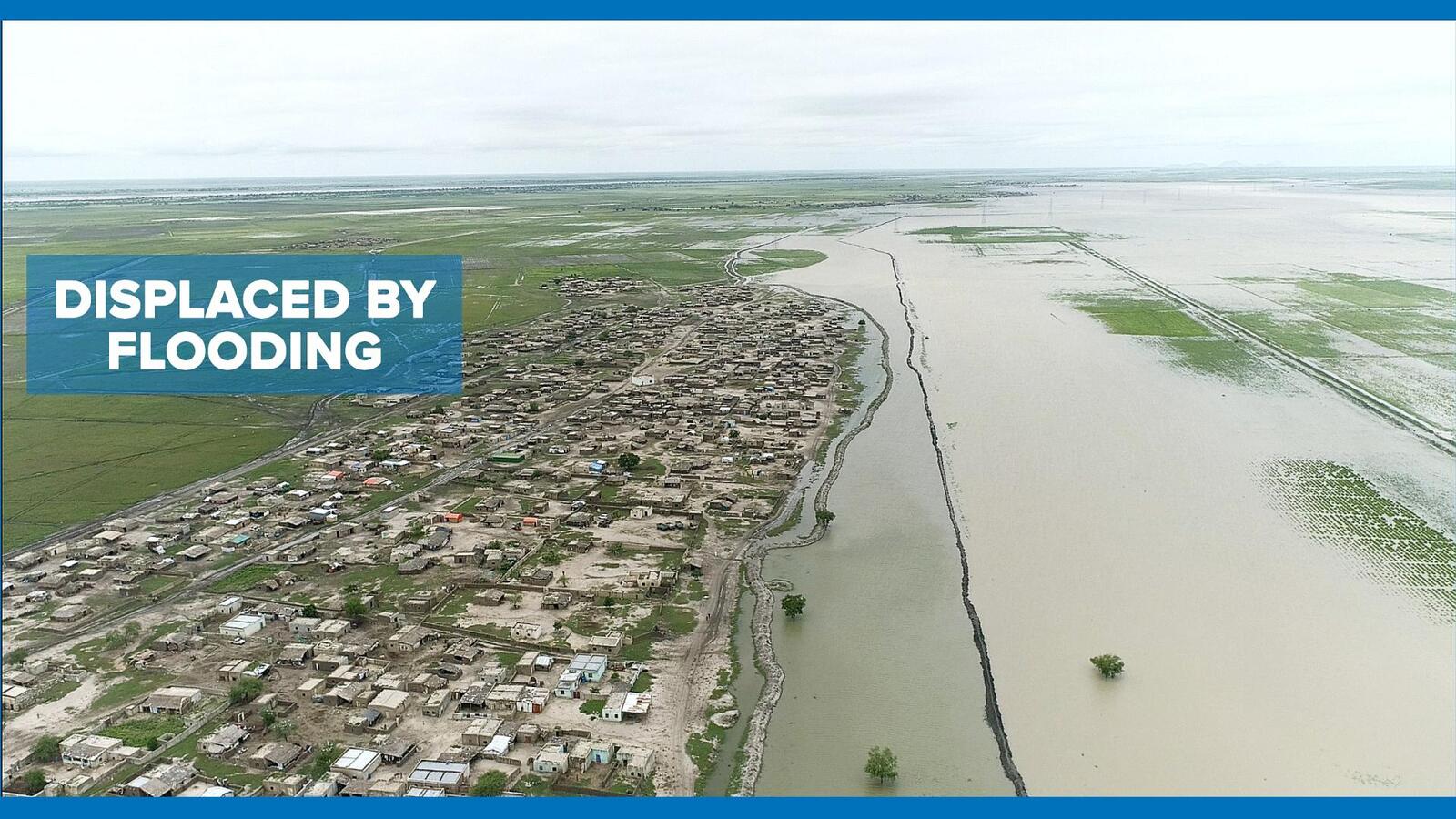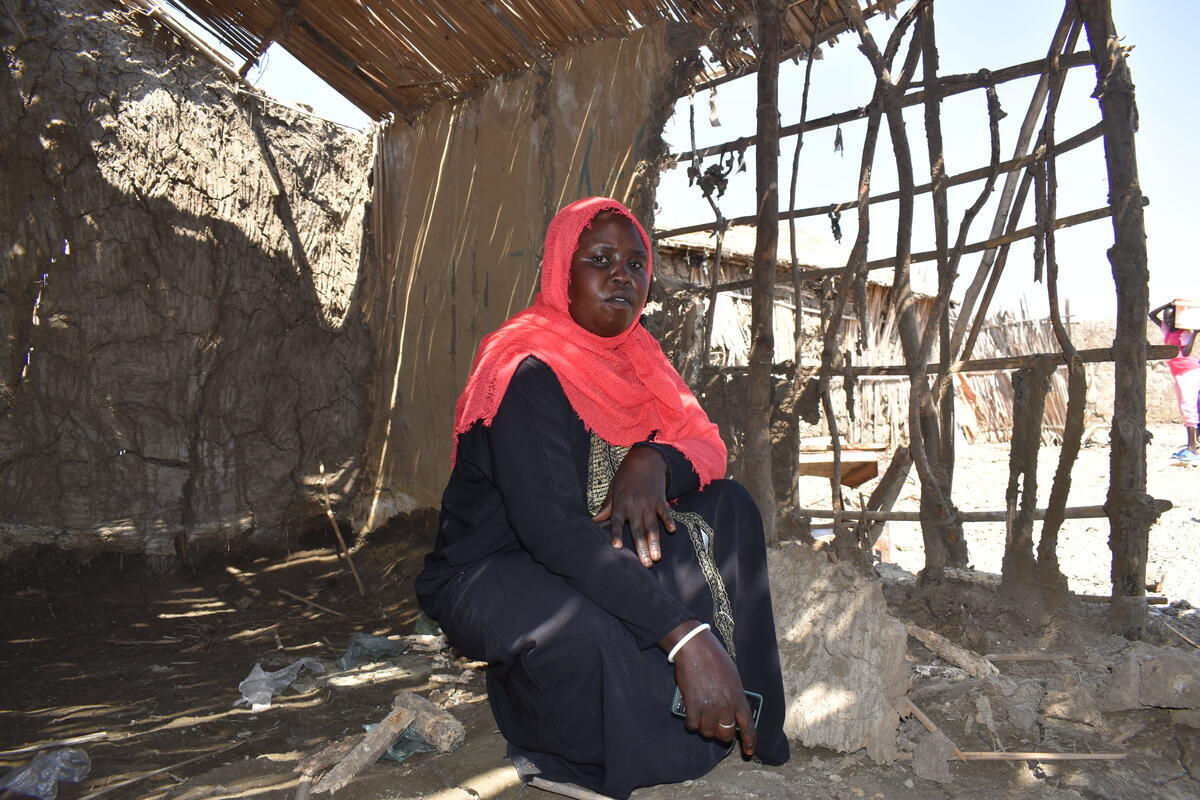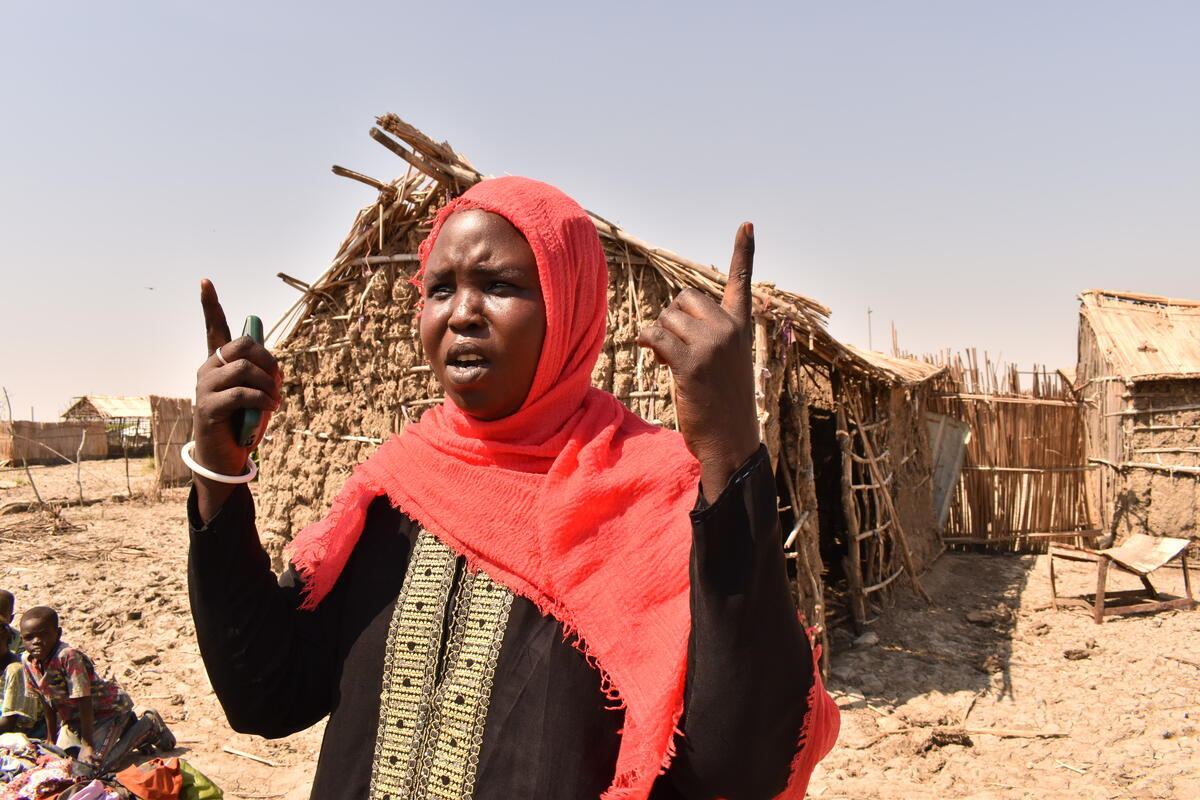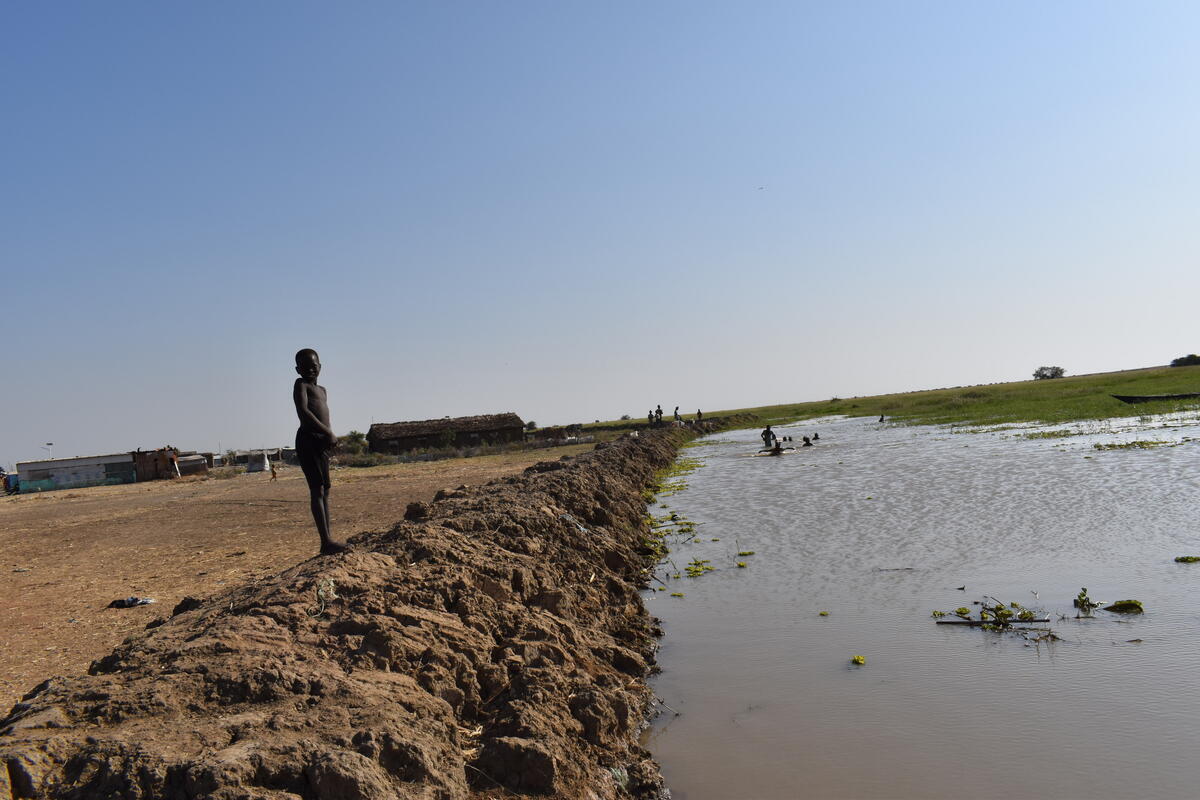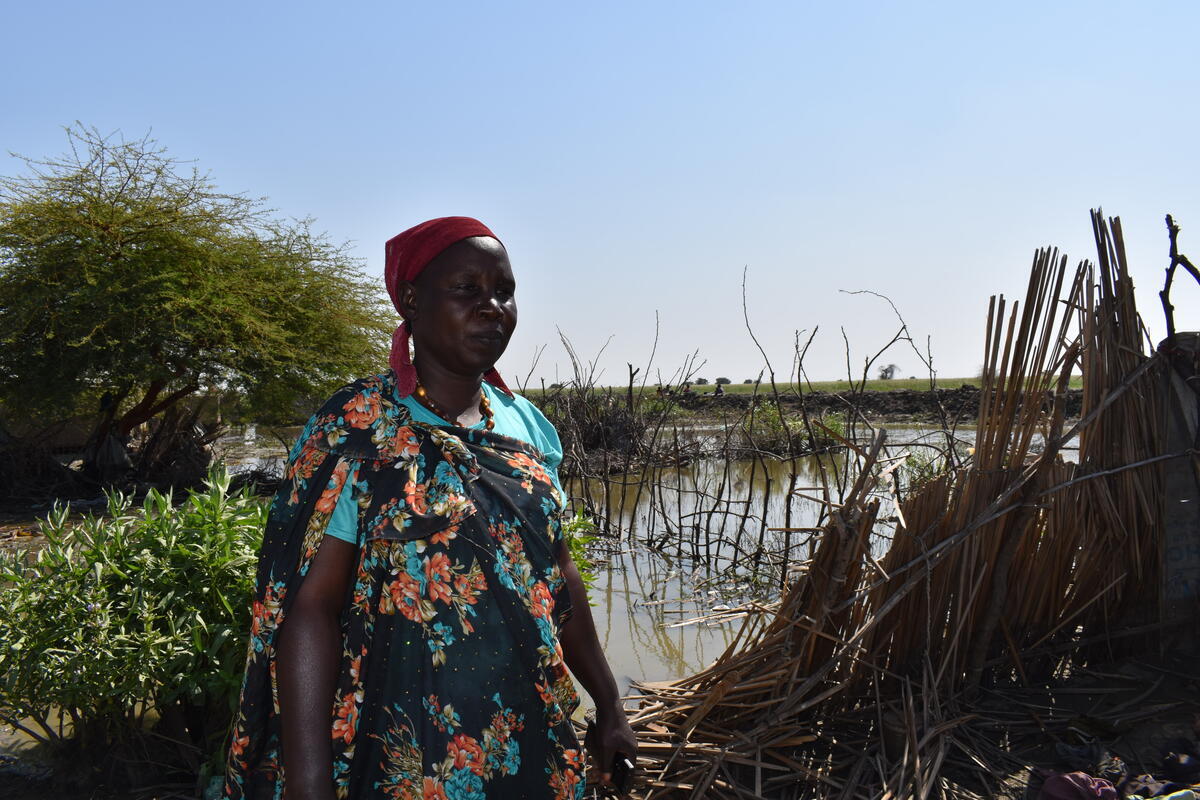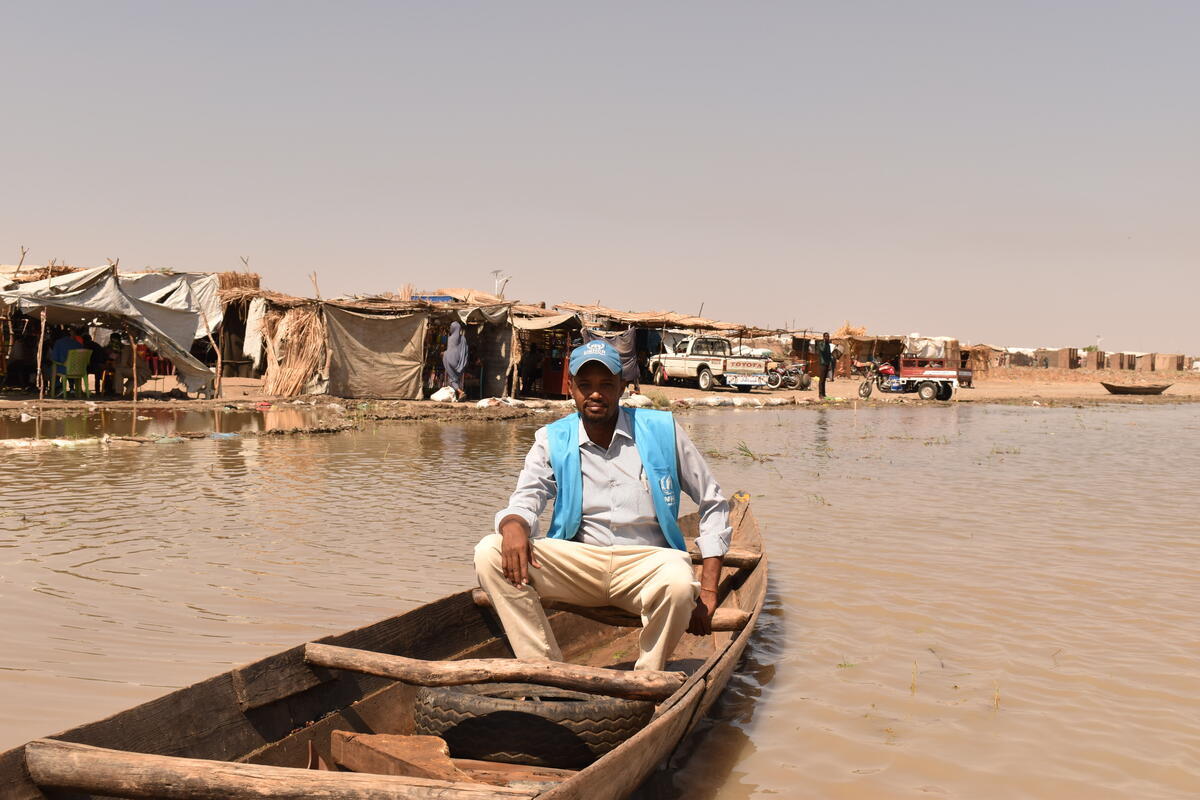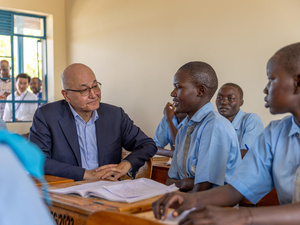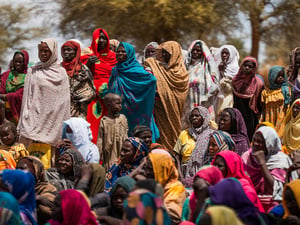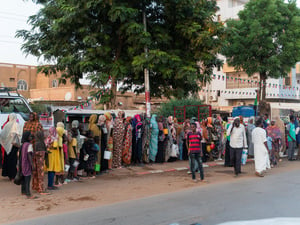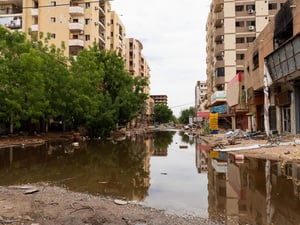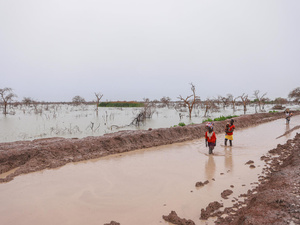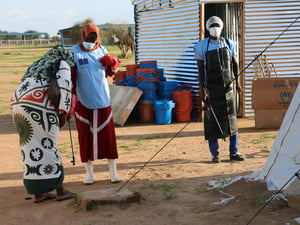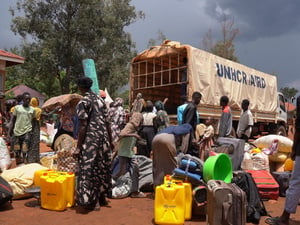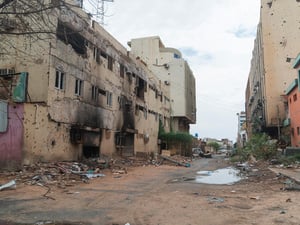Recurring floods in Sudan displace refugees and their host communities
Recurring floods in Sudan displace refugees and their host communities
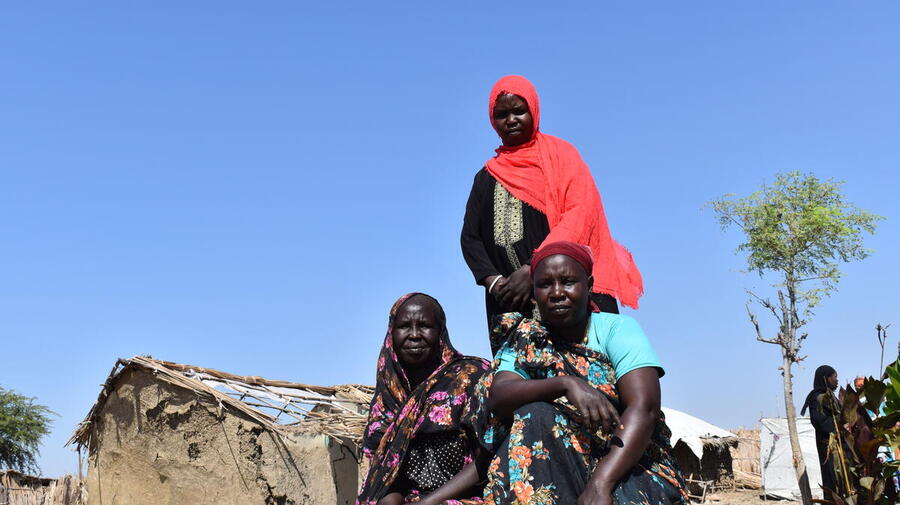
South Sudanese refugees Suzanna, Nyalan and Triza all lost their shelters to floods that hit their camp in Sudan's White Nile State in November 2022.
Nyalan Goldit, 37, stands in the remains of the shelter she once called home. First, conflict forced her to flee her country, and now floods have displaced her from the home where she hoped to find a new beginning.
She lost most of her belongings in the heavy flooding that swept through Sudan’s White Nile State last November. After a four-month-long rainy season, people had been getting back to their normal lives when the White Nile River burst its banks, catching everyone by surprise with unprecedented water levels and damage that displaced over 8,000 people from refugee camps and surrounding host communities.
“The water came up to our knees, and we had to leave our homes behind,” recalls the mother of seven, who was forced to seek refuge with neighbours on higher land.
"My dream right now is to have my shelter back."
“How do I dream without hope, and if I don’t even have a place to live? My dream right now is to have my shelter back, to have it repaired.”
With the next rainy season just months away, Al Redis 1 refugee camp, where Nyalan lives, remains surrounded by a large expanse of water and is only accessible by canoe.
Nyalan fled conflict in South Sudan in 2014, walking for seven days to reach Sudan while nine months pregnant. Despite the challenging route, she says she felt safe when she got to Sudan. But that sense of safety has been taken away by recurring and worsening floods.
Sudan experienced its worst flooding in 100 years in 2020, with over 800,000 people affected across the country, including refugees.
According to the UN, over 349,000 people across Sudan, including refugees and host communities, were again affected by heavy rains and devastating floods in 2022.
Triza Amum, 45, who also arrived in Sudan in 2014 with her family, is still feeling the impacts of the floods.
A single mother with nine kids to care for, she usually travels to a neighbouring state to work during the harvest season. Like many other refugees, she relied on the money earned during that time to supplement her aid assistance and provide for her family. However, this year she could not go.
“I could not leave my family behind. With no shelter and no safety, I had to stay for them,” she says.
Every year the White Nile River floods, but never before so extensively. Experts point to abnormal rainfall along the river, leading to an unexpected volume of water in the Jebel Aulia dam, some 260 kilometres away near Khartoum.
“Global temperatures continue to rise leading to extreme climatic events, including both flooding and drought conditions which will only get worse in coming years,” says Pankaj Singh, a Senior Operations Officer with UNHCR, the UN Refugee Agency, in Sudan. He adds that refugees living in flood-prone areas will continue to suffer as they struggle to recover from repeated damage to their shelters and camp infrastructure caused by recurring flooding.
White Nile State hosts the second largest refugee population in Sudan, with over 280,000 individuals, of which 84 per cent are women and children.
UNHCR, working with partner organizations, has assisted those displaced by the floods with core relief items such as blankets, solar lamps, jerry cans, kitchen sets and plastic sheets. The agency has also built dikes to hold back floodwaters from the camps and is using pumping systems to dry out most of the affected areas.
Although these measures have prevented further shelter damage, the refugees remain hemmed in by floodwaters, restricting their access to basic services and livelihoods.
With the aim of preparing for the next rainy season, which begins in May, UNHCR has been conducting a study in the affected refugee camps and surrounding host communities to address the issue of accessibility. Dikes are to be reinforced, and food and non-food items to be prepositioned closer to the camps. Road repairs, bridges and speedboats are being considered to improve humanitarian access and avoid communities living on the western bank of the White Nile River being cut off by flood waters.
But as climate change exacerbates humanitarian needs, aid agencies, including UNHCR, are increasingly overwhelmed. In 2022, UNHCR Sudan received just 43 per cent of the $349 million needed to effectively respond and provide protection and life-saving assistance to refugees, internally displaced people, and their host communities across the country.
Reuel Christopher Nettey, Head of UNHCR’s Sub-Office in White Nile State, says the underfunding of humanitarian responses in Sudan and elsewhere means there is a lack of resources for strengthening infrastructure and systems to withstand the impacts of climate change. “There is a need to look beyond quick-fix responses into preparedness and building resilience among these communities through development interventions to mitigate risks associated with the next rainy season,” he says.
After nearly a decade in Sudan, Triza and Nyalan have rebuilt their lives in White Nile and want nothing more than to be able to live there in safety. “Sudan is now my home,” says Nyalan. “It is where my family has relearned to hope for the future.”

